.jpg)
Back
Pteris vittata L.
| Family Name: | Pteridaceae |
| Synonyms: | Pteris longifolia auct non. L.<1> |
| Common Name: | Chinese Brake Fern, Brake Fern, Chinese Ladder Fern, 蜈蚣草 |
Pteris vittata or Chinese Brake is a fern that grows terrestrially or on the surfaces of rocks. It produces short-creeping rhizomes covered in narrow brown scales and oblong-lance shaped leaflets with a terminal leaflet at the tip. Leaflets have a heart-shaped base and toothed margins are observed in sterile leaflets only. Sori are linear, long, produced along the margins of the fronds.
Name
Classifications and Characteristics
| Plant Division | Ferns & Lycophytes (Non-Seed Vascular Plants) (Fern) |
|---|---|
| Plant Growth Form | Herbaceous Plant, Lithophyte |
| Mode of Nutrition | Autotrophic |
Biogeography
| Native Habitat | Terrestrial |
|---|---|
| Preferred Climate Zone | Tropical, Sub-Tropical / Monsoonal |
| Local Conservation Status | Cryptogenic |
Description and Ethnobotany
| Growth Form | It is a fern that can grow terrestrially and on surfaces of rocks. |
|---|---|
| Foliage | Fronds are closely clustered, held on a long stalk to 20 cm in height. The fronds produce oblong-lance shaped leaflets with a terminal leaflet at the tip. They are stalkless, variable in length, measuring to 15 cm long by 0.8 - 1.2 cm wide with a heart-shaped base. The terminal leaflet tend to be longer, to 20 cm in length. Sterile leaflets have toothed margins while the fertile ones are smooth. The leaflets reduce to ear-like projections (auricles) nearer to the base of the frond. |
| Reproductive Parts - non-flowering plant | Sori are linear, long, produced along the margins protected by false indusia. |
| Others - Plant Morphology | Rhizomes are short-creeping covered in narrow, light brown scales of up to 5 mm in length. <2> |
| Habitat | Occurs along rivers in shade below 800 m in altitude. Also found in open disturbed places especially in urban areas. |
| Etymology | Genus Pteris is from the Greek word "pteruc" which is the Greek name of a fern. Species vittata refers to the fern character of being banded longitudinally. |
| Ethnobotanical Uses | Others: It is able to accumulate arsenic in soil and store it in the fronds at a 100 times higher concentration. Research is being conducted to explore its potential in phytoremediation, the use of plants to clean polluted environments. <3> |
Landscaping Features
| Desirable Plant Features | Ornamental Foliage |
|---|---|
| Landscape Uses | Parks & Gardens, Small Gardens |
Fauna, Pollination and Dispersal
| Seed or Spore Dispersal | Abiotic |
|---|
Plant Care and Propagation
| Light Preference | Semi-Shade |
|---|---|
| Water Preference | Moderate Water |
| Plant Growth Rate | Fast to Moderate |
| Rootzone Tolerance | Moist Soils, Well-Drained Soils |
| Propagation Method | Spore |
Foliar
| Foliage Retention | Evergreen |
|---|---|
| Mature Foliage Colour(s) | Green |
| Foliar Shape(s) |
| Foliar Venation | Pinnate / Net |
| Foliar Margin | Entire, Serrate / Toothed |
| Foliar Apex - Tip | Caudate, Acuminate |
| Foliar Base | Cordate |
References
| References | <1> Hooker, W.J. (1858). Species Filicum, vol. 2, pp. 157. London: William Pamplin. <3> Yan, H. et al., (2019). Potential use of the Pteris vittata arsenic hyperaccumulation-regulation network for phytoremediation. Journal of Hazardous Materials, vol. 368, pp. 386-396. |
|---|
Image Repository
Others
| Master ID | 273 |
|---|---|
| Species ID | 1569 |
| Flora Disclaimer | The information in this website has been compiled from reliable sources, such as reference works on medicinal plants. It is not a substitute for medical advice or treatment and NParks does not purport to provide any medical advice. Readers should always consult his/her physician before using or consuming a plant for medicinal purposes. |

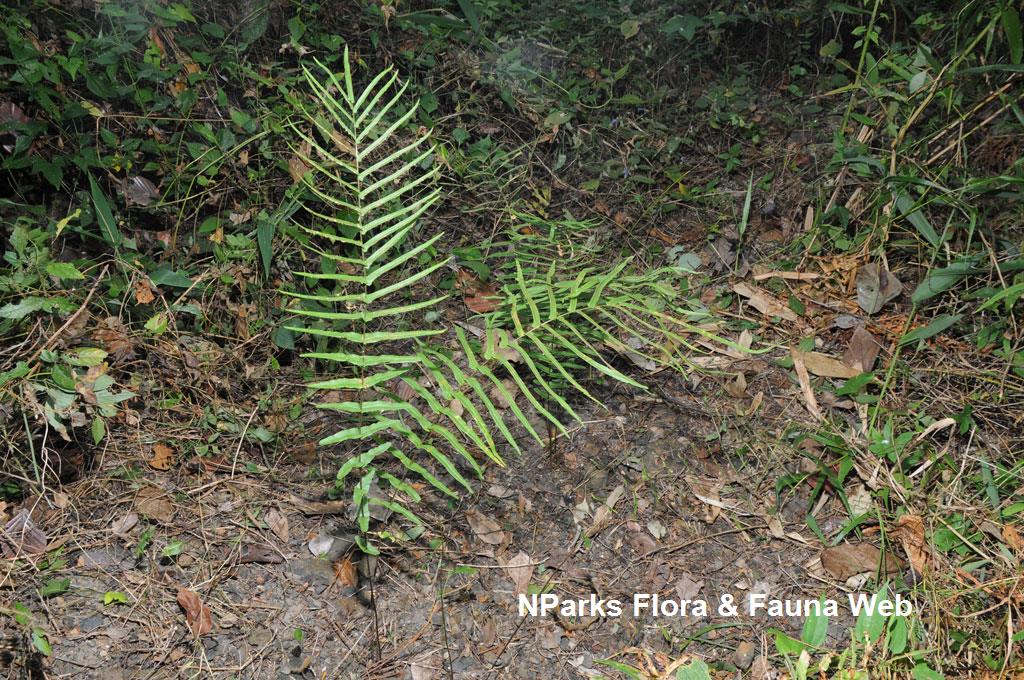
.jpg)
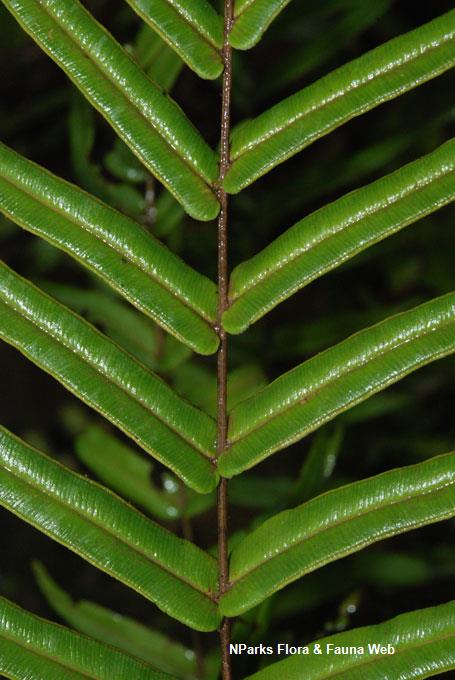
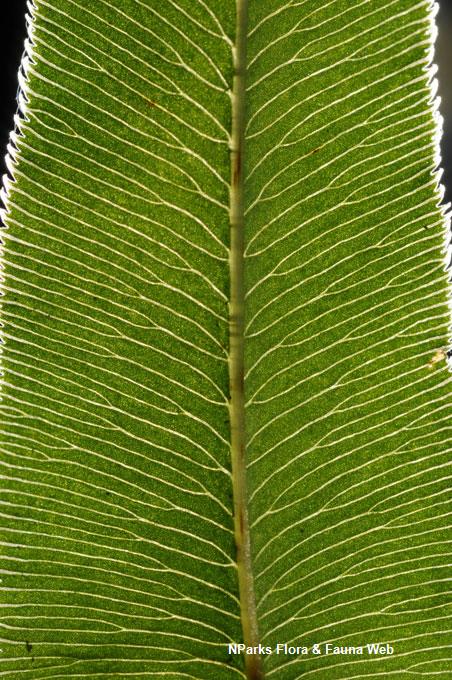
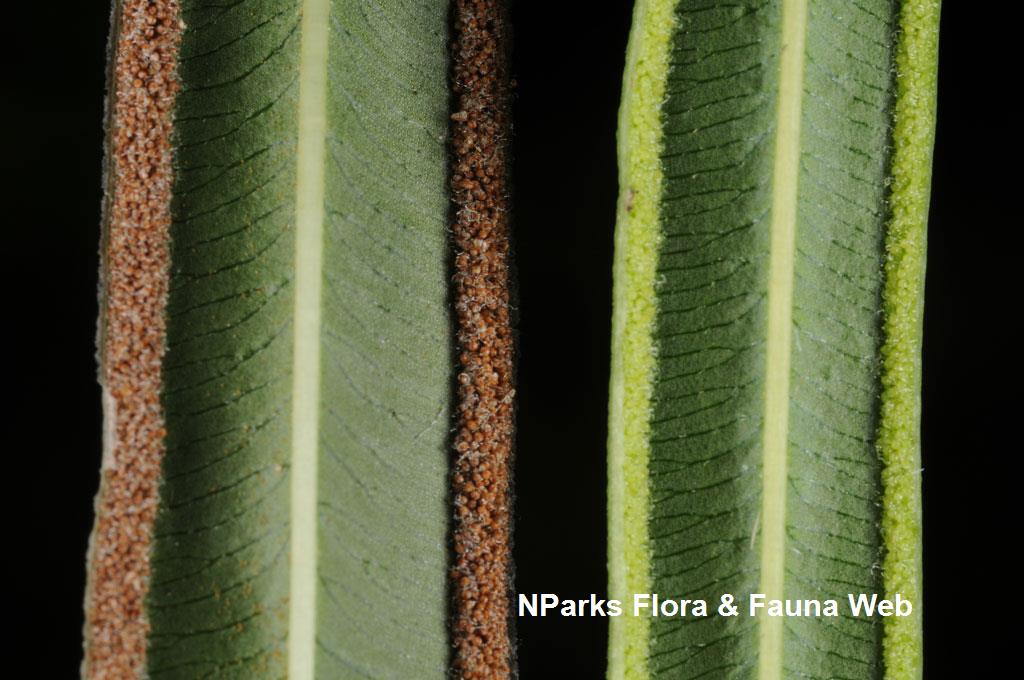





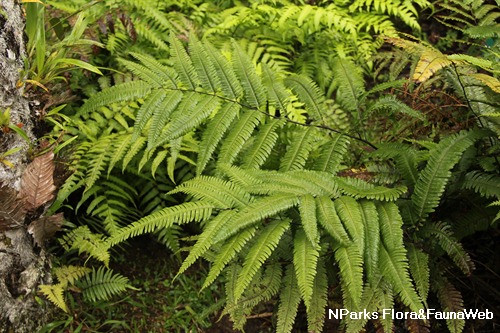


.jpg)